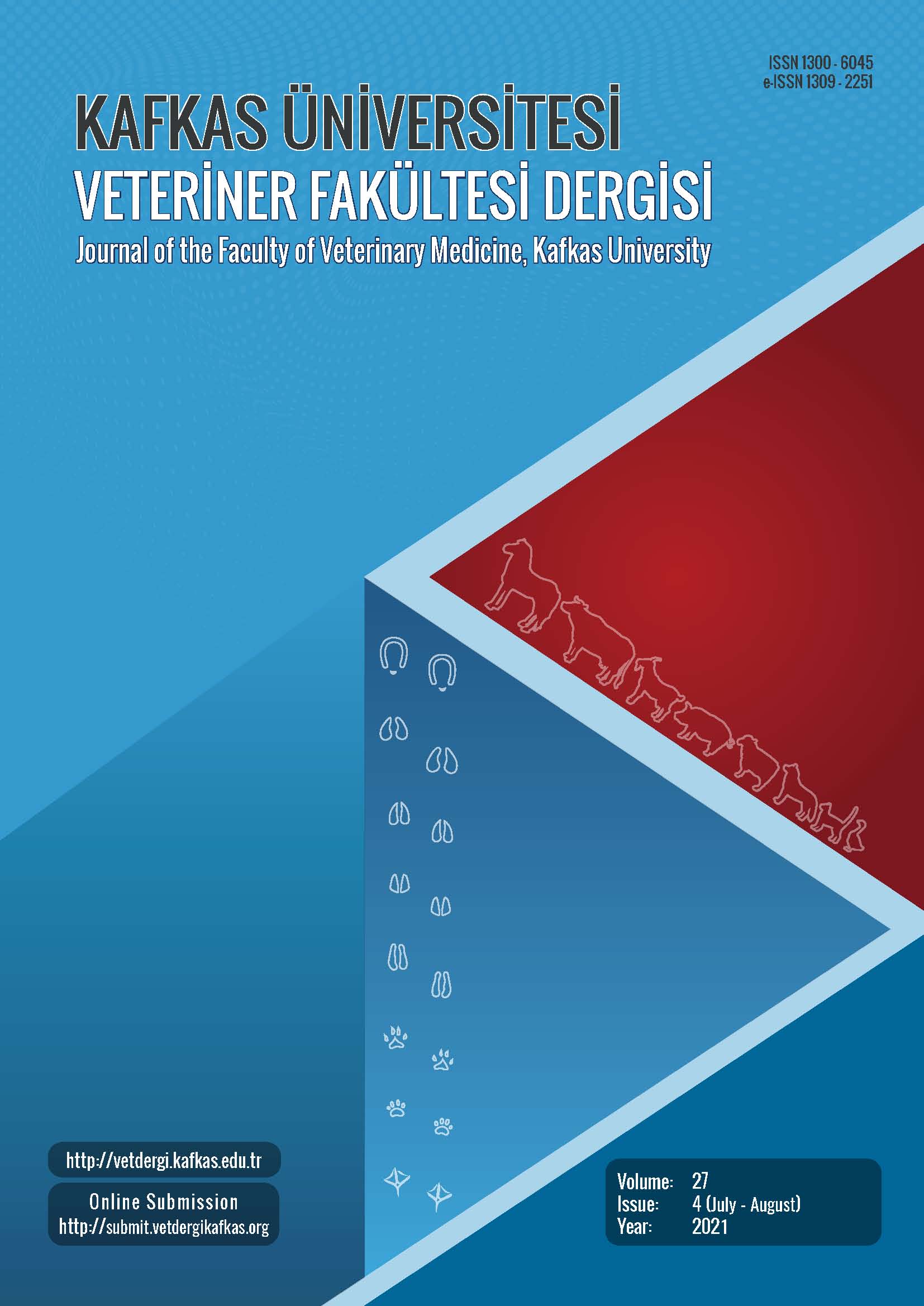
This journal is licensed under a Creative Commons Attribution-NonCommercial 4.0 International License
Kafkas Üniversitesi Veteriner Fakültesi Dergisi
2021 , Vol 27 , Issue 4
Protective Effects of Chrysin in Rats with Ovarian Torsion
1Van Yuzuncu Yil University, Faculty of Medical, Obstetrics and Gynecology Department, TR-65080 Van - TURKEY2Van Yuzuncu Yil University, Health Service Vocational School of Higher Education, TR-65080 Van - TURKEY
3Van Yuzuncu Yil University, Faculty of Veterinary, Department of Artificial Insemination, TR-65080 Van - TURKEY
4Van Yuzuncu Yil University, Faculty of Veterinary, Internal Medicine, TR-65080 Van - TURKEY
5Van Educational and Research Hospital, Department of Anesthesiology and Reanimation, TR-65080 Van -TURKEY
6Van Yuzuncu Yil University, Faculty of Veterinary, Department of Pathology, TR-65080 Van - TURKEY DOI : 10.9775/kvfd.2021.25357 The objective of this study is to assess the protective eff ect of chrysin (CH) against ovarian torsion-detorsion injury. Thirty-two female albino rats were divided into 4 groups as Control, Torsion/Detorsion (T/D), TD-CH, and CH. Ovarian torsion was done for 3 hours on TD and TD-CH groups and then detorsion was performed. 50 mg/kg of CH was administered to the TD-CH group via oral gavage half an hour before the detorsion. Subsequently, 50 mg/kg of CH was administered via oral gavage to TD-CH and CH groups for 14 days. At the end of the experiment, blood samples were collected and ovarian tissue were taken. SOD and GPx activities and GSH and 8-OHdG levels were studied in serum and ovarian tissue. Also, IL-18, KIM-1, NGAL, Cys-C levels were studied in serum samples. GSH levels and GPx, SOD activities in both serum and ovarian tissue were significantly lower in TD group compared to the control and TD-CH groups (P<0.05), whereas the 8-OHdG level was significantly higher (P<0.05). Treatment with CH resulted in a decrease in 8-OHdG level and an increase in GSH level, GPx and SOD activities in both serum and ovarian tissue in the TD-CH group compared to TD group (P<0.05). Chrysin could ameliorate ovarian injury. Essentially, this outcome is thanks to the antioxidant, anti-infl ammatory, and antiapoptotic eff ects of chrysin. Furthermore, it also has significant eff ects on DNA oxidative damage. Keywords : Ovary torsion, Chrysin, 8-OHdG, Antioxidant










